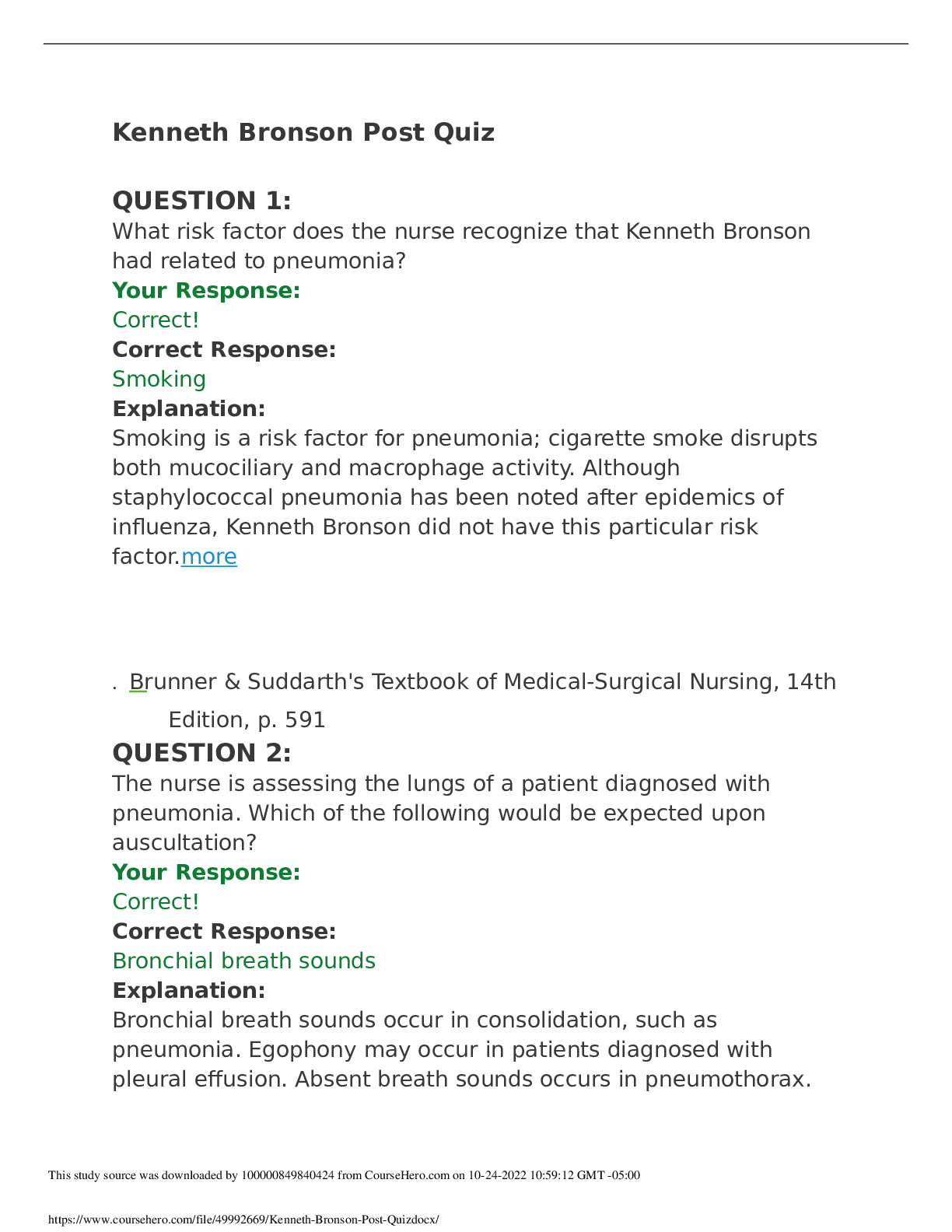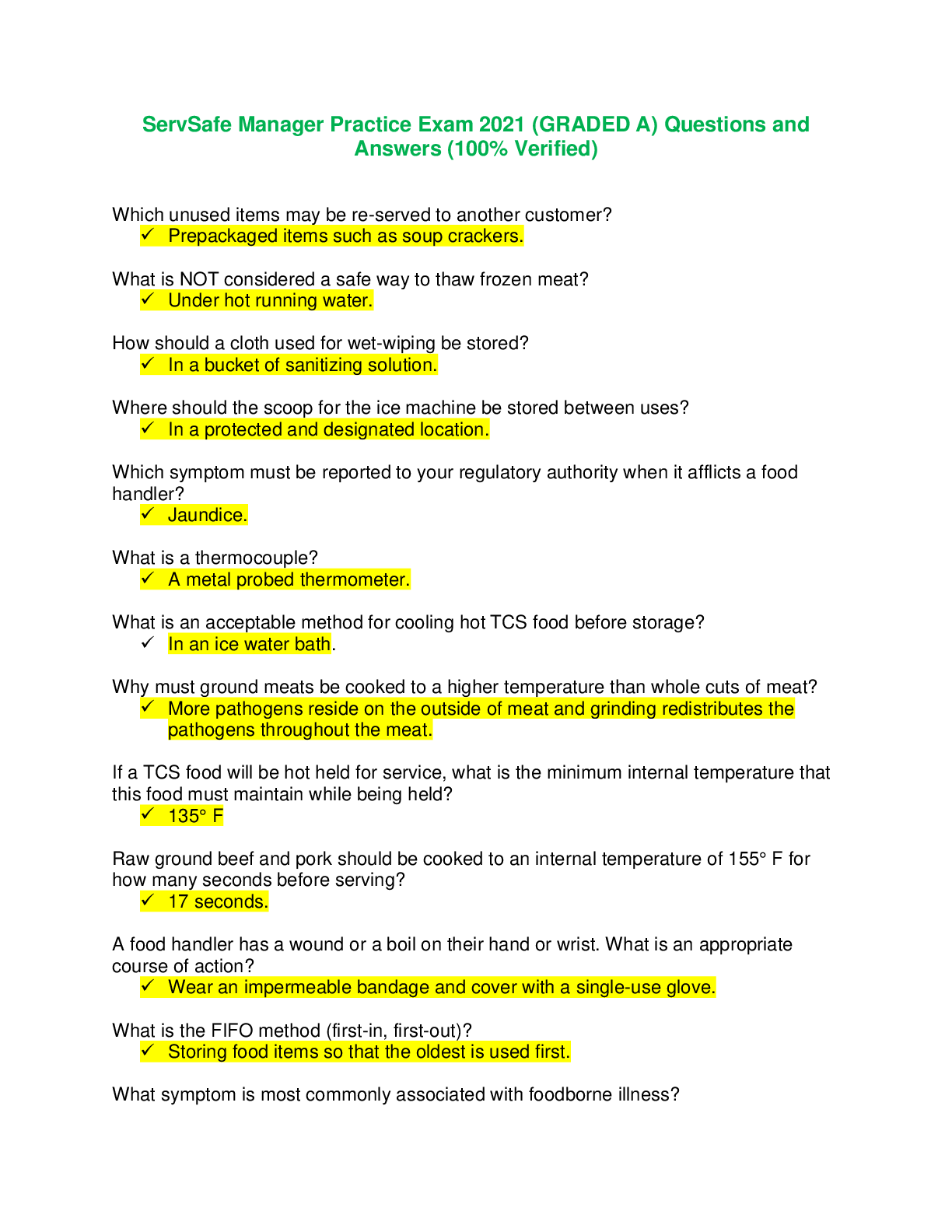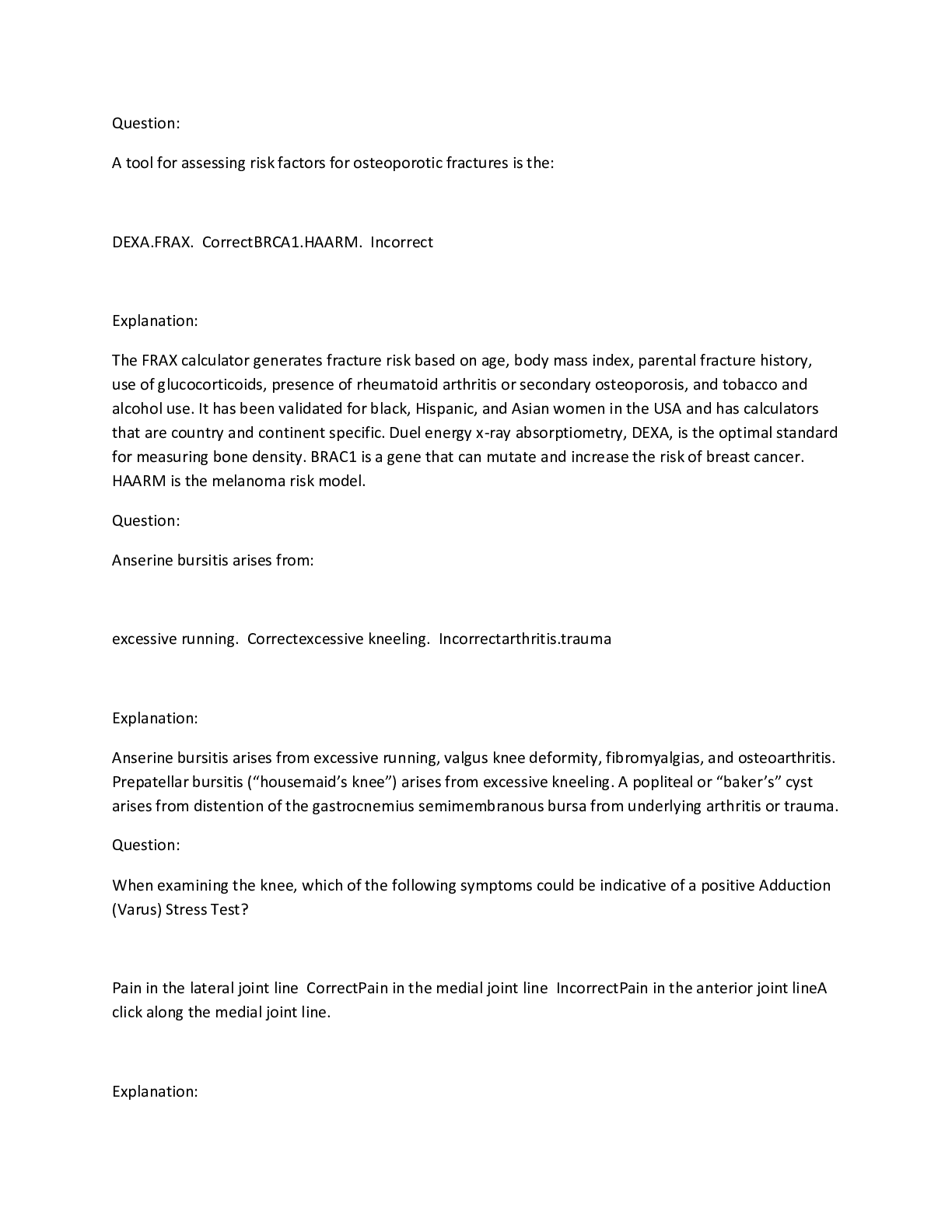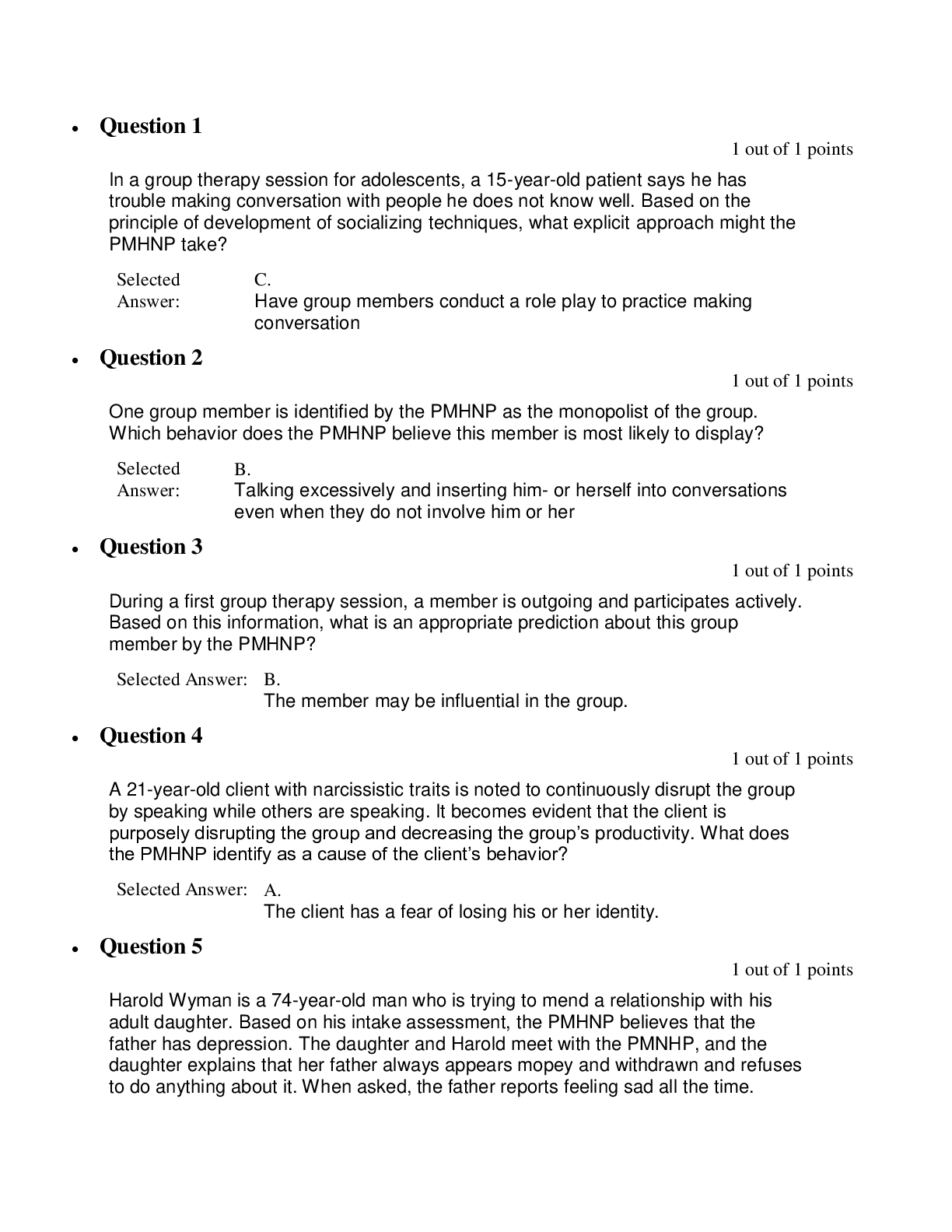Micro Biology > EXAM > Bio 171 Microbiology Exam 5 Question and Answer elaborations (100% CORRECT SOLUTIONS) (All)
Bio 171 Microbiology Exam 5 Question and Answer elaborations (100% CORRECT SOLUTIONS)
Document Content and Description Below
Due No due date Points 5 Questions 16 Time Limit None Instructions Note: The module described numerous microbial diseases. You are responsible for knowing the causative agent, morphology, and ... Gram status of each. Where applicable, you should be able to identify an image of the resulting disease state in a patient. Attempt History Attempt Time Score LATEST Attempt 1 1,634 minutes 5 out of 5 Score for this quiz: 5 out of 5 Submitted Jun 7 at 11:27pm This attempt took 1,634 minutes. Question 2 0 / 0 pts What would a researcher be certain to note while analyzing a microbial sample? Your Answer: 1. Size and shape 2. Any observable motility 3. Gram status (positive or negative) 4. The presence of any chemical reactions 5. Changes in color localized to the organism or the surrounding media 6. Capture (or draw) images of any of the characteristics described above A lab researcher would be certain to note 1. Size and shape 2. Any observable motility 3. Gram status (positive or negative) 4. The presence of any chemical reactions 5. Changes in color localized to the organism or the surrounding media 6. Capture (or draw) images of any of the characteristics described above Question 10 0 / 0 pts What are the three main conditions caused by the botulism toxin? Your Answer: Foodborne, infant and wound. Foodborne botulism is often the result of improperly canned, contaminated, low-acidic foods. Infant botulism occurs when children, usually under the age of 6 months consume foods containing the bacteria. Wound botulism occurs when botulinum bacteria colonizes a deep wound, often a puncture such as those who inject street drugs such as heroine Foodborne, infant and wound. Foodborne botulism is often the result of improperly canned, contaminated, low-acidic foods such as green beans, corn and beats. Infant botulism occurs when children, usually under the age of 6 months consume foods containing the bacteria. A potential source of infant botulism is honey (which is why pediatricians recommend avoiding feeding honey to infants) but can also be found in common places such as soil. Wound botulism occurs when C. botulinum bacteria colonize a deep wound, often a puncture such as those who inject street drugs such as heroine. As contaminated needles are injected through the skin, spores enter the body and, in the absence of oxygen, release the toxin. Question 12 0 / 0 pts What is the mechanism of action of the toxin produced by clostridium tentani (tetanus)? Your Answer: The toxin acts on inhibitory neurons causing systemic muscle stiffness and spasms. Muscle stiffness can be observed in the jaw (lock-jaw) or spread systemically (if left untreated) to muscles relating to respiratory function. The toxin acts on inhibitory neurons causing systemic muscle stiffness and spasms. Muscle stiffness can be observed in the jaw (lock-jaw) or spread systemically (if left untreated) to muscles relating to respiratory function. Question 14 0 / 0 pts What are the three forms of plague, and what regions do they affect? Your Answer: Bubonic (lymph), pneumonic (lungs) and septicemic (blood). Bubonic plague is best characterized by painfully swollen lymph nodes. Pneumonic plague affects the respiratory system (lungs). The most rare of all three plagues, septicemic plague targets the blood system and, if left untreated, will develop into a life-threatening illness as the blood-borne bacteria can infect all major organs. Question 15 0 / 0 pts According to the module, which STD might be best identified via dark-field microscopy? Your Answer: Syphilis. The causative agent, treponema pallidum, is a thin spirochete, making Gram staining (and visualization) difficult. Treponema is therefore most often best identified via dark-field microscopy. Syphilis. The causative agent, treponema pallidum, is a thin spirochete, making Gram staining (and visualization) difficult. Treponema is therefore most often best identified via dark-field microscopy. Quiz Score: 5 out of 5 [Show More]
Last updated: 2 years ago
Preview 1 out of 10 pages

Buy this document to get the full access instantly
Instant Download Access after purchase
Buy NowInstant download
We Accept:

Reviews( 0 )
$11.00
Can't find what you want? Try our AI powered Search
Document information
Connected school, study & course
About the document
Uploaded On
Aug 24, 2022
Number of pages
10
Written in
Additional information
This document has been written for:
Uploaded
Aug 24, 2022
Downloads
0
Views
59





 Questions and Answers 100% VERIFIED.png)
 Questions and Answers 100% correct Solutions.png)



















